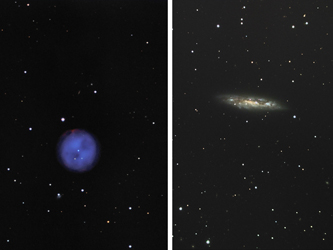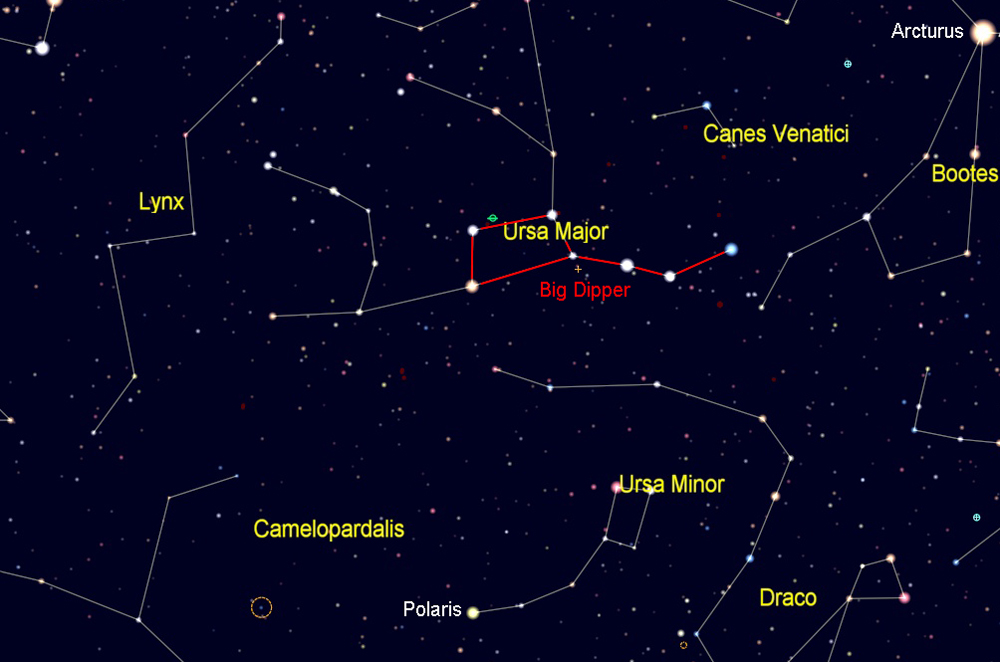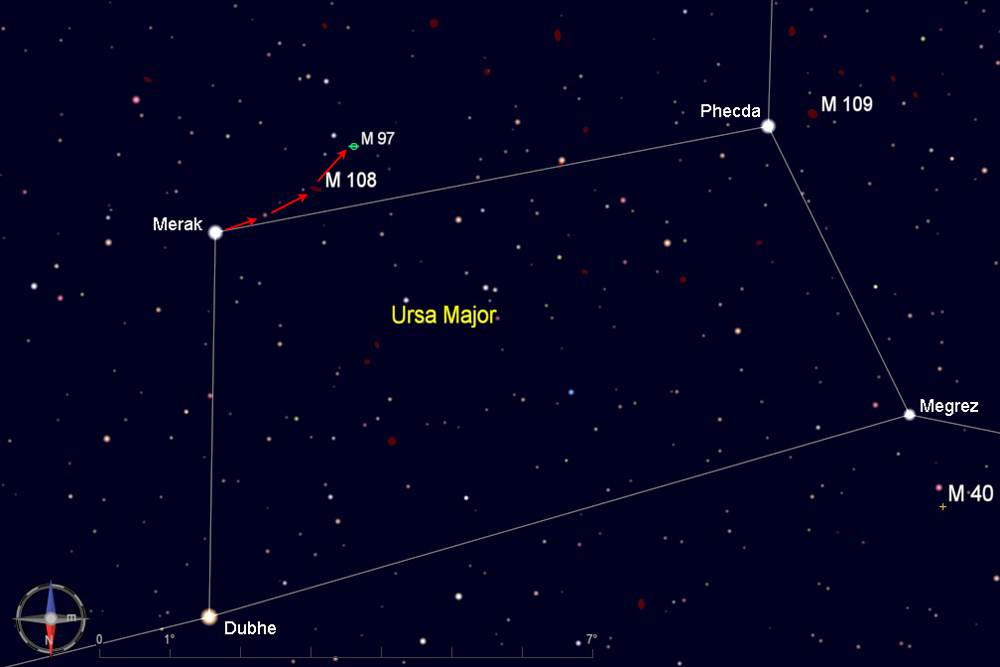
Start by finding the Big Dipper, one of the most recognizable star patterns in the sky. It is part of the constellation Ursa Major, the big bear. It is shown here upside down, high in the sky above Polaris, which is where it can be found during the evenings in spring and summer. For other seasons and times of night, rotate the chart as needed to match what you see in the northern sky.

Note that north is to the bottom in this chart. Starting from Merak at the bottom of the Big Dipper's bowl, move 1.5 degrees to the southeast (just outside the bowl shape). A chain of a few dim stars can help guide the way. Through a telescope you should see the elongated shape of M108. Then move less that a degree to the southeast to arrive at M97. Look carefully so you don't miss its dim circular glow.
